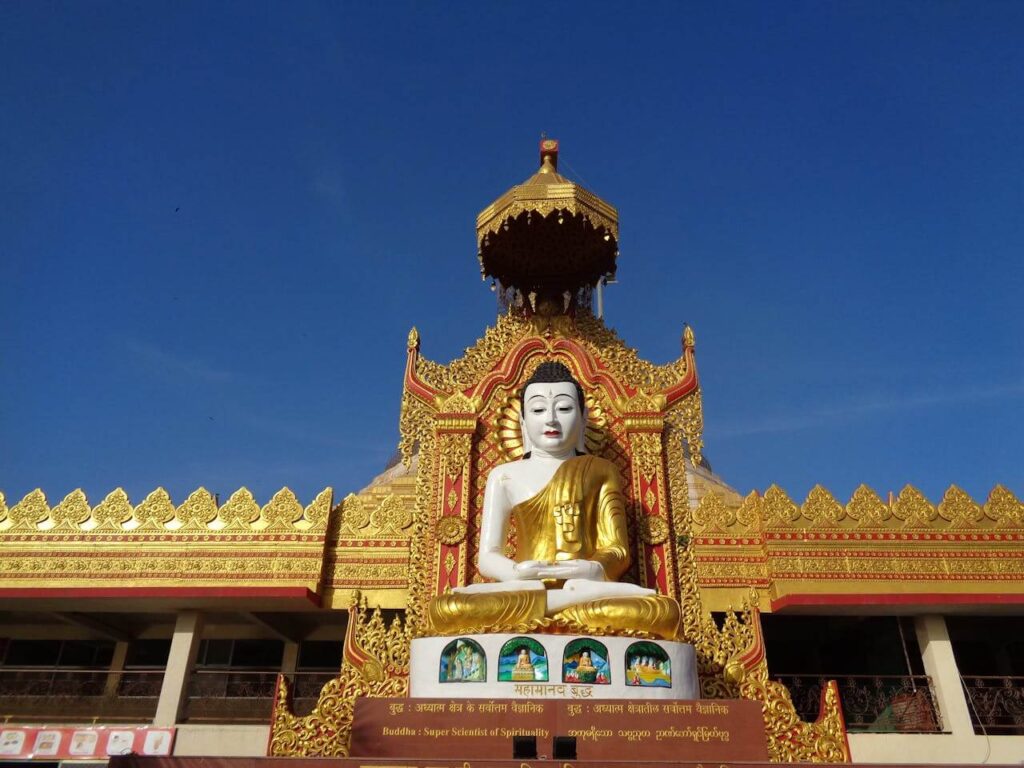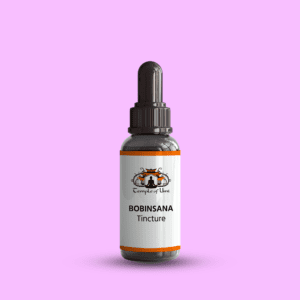Unveiling the Mysteries: What Are the Elements of Ayahuasca?

By Temple of Umi

Table of Contents
Discover What are the elements of ayahuasca in this comprehensive guide. Learn about its essential elements, preparation, and cultural significance. Explore how this powerful plant medicine is made and what makes it unique.
Due to its profound effects and deep spiritual connections, Ayahuasca has captured the curiosity of many. Understanding its fundamental elements is crucial for those interested in exploring this ancient plant medicine. In this blog post, we’ll delve into the core components of Ayahuasca, its preparation process, and its cultural significance. By the end, you’ll understand what makes Ayahuasca a unique and robust experience.
The Primary Ingredients of Ayahuasca
Ayahuasca is a traditional Amazonian brew used in shamanic rituals and spiritual practices. Its preparation typically involves two primary plant ingredients: Banisteriopsis caapi and Psychotria viridis. Each plays a distinct role in the brew’s psychoactive effects.
Banisteriopsis caapi
Banisteriopsis caapi, commonly known as the Ayahuasca vine, is one of the central elements in the brew. This vine contains harmala alkaloids, such as harmine, harmaline, and tetrahydroharmine, known as MAO inhibitors. These compounds inhibit the monoamine oxidase enzyme in the digestive system, allowing the other ingredient’s psychoactive effects to be experienced.
- Role in the Brew: The MAO inhibitors in Banisteriopsis caapi enable the N, N-dimethyltryptamine (DMT) present in Psychotria viridis to become active when ingested. Without these inhibitors, the body would break down DMT before it could produce any effects.
Psychotria viridis
Psychotria viridis, often called chacruna, is another essential component of the Ayahuasca brew. It contains DMT, a powerful psychedelic compound that is responsible for the visionary and mystical experiences associated with Ayahuasca.
- Role in the Brew: DMT is a potent hallucinogen that induces profound experiences of altered perception, spirituality, and introspection. When combined with the MAO inhibitors from Banisteriopsis caapi, DMT can produce its full effects.
The Preparation Process
Preparing Ayahuasca is labor-intensive and deeply ritualistic. Traditional preparation involves several steps to ensure the correct balance of the ingredients.
Harvesting and Processing
- Harvesting: Banisteriopsis caapi and Psychotria viridis are harvested from the Amazon rainforest. The vines and leaves are collected carefully, respecting traditional harvesting practices.
- Preparation: The preparation typically begins with the crushing or grinding the Banisteriopsis caapi vine into a fibrous material. The Psychotria viridis leaves are often crushed or ground as well. The vine and leaves are then boiled together for several hours or even days, depending on the specific tradition. This process extracts the active compounds and creates a potent liquid.
Boiling and Straining
- Boiling: The combined plant materials are cooked in large pots, frequently adding water and reducing the liquid through evaporation. This extraction process helps concentrate the active compounds.
- Straining: After boiling, the mixture is strained to remove the plant solids, leaving behind a dark, thick liquid that constitutes the final Ayahuasca brew.

The Ritual and Cultural Significance
Ayahuasca is more than just a psychedelic drink; it is deeply embedded in the cultural and spiritual practices of Amazonian tribes. The ceremonial use of Ayahuasca plays a significant role in the traditional practices of these communities.
Shamanic Practices
- Role of the Shaman: A shaman or curandero leads the ritual in traditional Ayahuasca ceremonies. The shaman guides participants through their journey, interprets visions, and provides spiritual insight.
- Ceremonial Context: The Ayahuasca ceremony often involves chanting, singing, and other ritualistic elements that are believed to enhance the experience and facilitate healing.
Modern Context and Integration
- Global Interest: In recent years, Ayahuasca has gained popularity beyond the Amazon, attracting individuals from around the world seeking spiritual and therapeutic experiences. This international interest has led to the establishment of Ayahuasca retreats in various countries, where traditional practices are often adapted to contemporary contexts.
- Integration: Participants in Ayahuasca ceremonies are encouraged to reflect on their experiences and integrate the insights gained into their daily lives. This integration process is considered crucial for maximizing the benefits of the experience.
Safety and Legal Considerations
While Ayahuasca offers profound experiences, it is essential to approach it with caution and awareness.
Safety Precautions
- Health Considerations: Individuals with certain medical conditions or those taking specific medications should be cautious, as Ayahuasca can interact with various substances. It’s essential to consult with a healthcare professional before participating in an Ayahuasca ceremony.
- Setting and Guidance: Choosing a reputable retreat center or guide ensures a safe and supportive environment. Proper preparation and guidance can significantly impact the overall experience.
Legal Status
- Legal Considerations: The legal status of Ayahuasca varies by country. In some places, it is classified as a controlled substance, while in others, it is permitted for religious or therapeutic use. It is essential to be aware of and comply with local regulations regarding Ayahuasca.

Determination
Understanding the elements of Ayahuasca—its primary ingredients, preparation process, and cultural significance—provides valuable insights into this powerful plant medicine. Whether exploring Ayahuasca for spiritual growth, healing, or curiosity, being informed about its components and traditions can enhance your experience and ensure a respectful approach.
As interest in Ayahuasca grows, it remains essential to approach it with care and respect, recognizing its deep-rooted cultural heritage and the potential for transformative experiences.
For those interested in exploring Ayahuasca retreats, research and choose reputable centers that prioritize safety and authenticity. This will allow you to embark on your Ayahuasca journey with confidence and mindfulness.
- Sacred Plant Medicine Retreats in Georgia
- 5 Ayahuasca Retreats in California Worth Exploring
- 7 Best Aya Retreats in America. Click here.
- Mcdonough Ayahuasca retreat
- Conley Ayahuasca retreat
- Whitesburg Ayahuasca retreat
- Brooks Ayahuasca retreat
- Gay Ayahuasca retreat
- Williamson Ayahuasca retreat
- Orchard Hill Ayahuasca retreat
- Glenn Ayahuasca retreat
- Luthersville Ayahuasca retreat
- Shady Dale Ayahuasca retreat
- Bowdon Junction Ayahuasca retreat
- Sargent Ayahuasca retreat
- Greenville Ayahuasca retreat
- Lovejoy Ayahuasca retreat
- Winston Ayahuasca retreat
- Rutledge Ayahuasca retreat
- Moreland Ayahuasca retreat
- Molena Ayahuasca retreat
- Lebanon Ayahuasca retreat
- Good Hope Ayahuasca retreat
- Haralson Ayahuasca retreat
- An Inclusive List of Psychedelic Quotes
- Mount Ayahuasca retreat
- Grantville Ayahuasca retreat
- Pine Lake Retreat near
- Rydal Ayahuasca retreat
- Porterdale Ayahuasca retreat
- Waco Ayahuasca retreat
- Temple Ayahuasca retreat
- Bethlehem Ayahuasca retreat
- Jenkinsburg Ayahuasca retreat
- Adairsville Ayahuasca retreat
- Red Oak Ayahuasca retreat
- Woodbury Ayahuasca retreat
- Cassville Ayahuasca retreat
- Redan Ayahuasca retreat
- North Decatur Ayahuasca retreat
- Grantville Ayahuasca retreat
- Hillsboro Ayahuasca retreat
- Jackson Ayahuasca retreat
- Braselton Ayahuasca retreat
- Zebulon Ayahuasca retreat
- Flovilla Ayahuasca retreat
- Auburn Ayahuasca retreat
- Warm Springs Ayahuasca retreat
- Scottdale Ayahuasca retreat
- Lithia Springs Ayahuasca retreat
- Villa Rica Ayahuasca retreat
- Grayson Ayahuasca retreat
- Sunny Side Ayahuasca retreat
- Senoia Ayahuasca retreat
- Locust Grove Ayahuasca retreat
- Chamblee Ayahuasca retreat
- Fairburn Ayahuasca retreat
- Snellville Ayahuasca retreat
- Monticello Ayahuasca retreat
- Union City Ayahuasca retreat
- Tallapoosa Ayahuasca retreat
- Bremen Ayahuasca retreat
- Hampton Ayahuasca retreat
- Monroe Ayahuasca retreat
- Marble Hill Ayahuasca retreat
- Madison Ayahuasca retreat
- Dawsonville Ayahuasca retreat
- Felton Ayahuasca retreat
- Concord Ayahuasca retreat
- Mansfield Ayahuasca retreat
- Taylorsville Ayahuasca retreat
- Roopville Ayahuasca retreat
- Turin Ayahuasca retreat
- Franklin Ayahuasca retreat
- Clarkdale Ayahuasca retreat
- Talking Rock Ayahuasca retreat
- Jersey Ayahuasca retreat
- Kingston Ayahuasca retreat
- Bostwick Ayahuasca retreat
- North Metro Ayahuasca retreat
- Meansville Ayahuasca retreat
- Social Circle Ayahuasca retreat
- White Ayahuasca retreat
- Rhode Island Ayahuasca retreat
- Maryland Ayahuasca retreat
- Delaware Ayahuasca retreat
- New Jersey Ayahuasca retreat
- Connecticut Ayahuasca retreat
- Massachusetts Ayahuasca retreat
- Hampshire Ayahuasca retreat
- Pennsylvania Ayahuasca retreat
- New York Ayahuasca retreat
- Florida Ayahuasca retreat
- South Carolina Ayahuasca Retreat
- North Carolina Ayahuasca Retreat
- West West Virginia Ayahuasca retreat
- Virginia Ayahuasca retreat
- Ohio Ayahuasca retreat
- Alabama Ayahuasca retreat
- Mississippi Ayahuasca retreat
- Tennessee Ayahuasca retreat
- Kentucky Ayahuasca retreat
- IndianaAyahuasca retreat
- ILLINOIS Ayahuasca retreat
- Missouri Ayahuasca retreat
- Arkansas Ayahuasca retreat
- Louisiana Ayahuasca retreat
- Texas Ayahuasca retreat
- Oklahoma Ayahuasca retreat
- KansasAyahuasca retreat
- Ayahuasca retreats near me in Experiment.
- A wellness retreat in Georgia
- What is Ayahuasca?
- Embark on a Journey of Transformation with Spiritual Healing
- Unveiling Healing Energy at the Temple of Umi
- 10 Energy Healing Techniques to Transform Your Life
- Where to get Ayahuasca in the USA
- Top Ayahuasca retreats in the USA. Learn more.
- Cost of Ayahuasca Retreat: Balancing Cost and Experience. Learn more.
- What is trauma bonding?
- A Journey into the Healing Properties of Psychedelic Mushrooms. Learn more.
- Ayahuasca Retreat Georgia – Experience Spiritual Awakening
- Spiritual Retreats Georgia
- Shaman in America Exploration
- Shamanism – Shamanic healing
- Shaman Healing Guide
- Ayahuasca ceremonies Ayahuasca ceremonies near you in the USA
- Ayahuasca Experience
- DMT Journey, Benefits, and Side Effects
- Iowaska – What is it?
- Plant medicine retreats in Georgia
- Why massage is beneficial, according to a cardiologist.
- Are mushrooms truffles – What Is a Truffle?
- 11 Best Ayahuasca Retreats in the USA for Spiritual Healing
- What is Rapé?
- What is a Tincture?
- Where to find Ayahuasca near me
- Healing retreats USA
- Best Retreats USA








